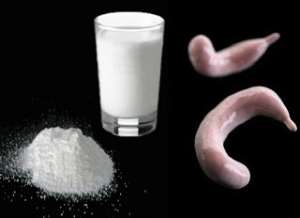
Dried milk contaminated with cryptosporidia virus were shipped from the USA to Cuba, Costa Rica, Liberia, Congo, Uganda, Haiti and South Africa
In Haiti, where still in 1981, this protozoan had not appeared, 21 out of 144 children under six months were affected by cryptosporidiosis in 1986. 19 out of 21 had been given the dried milk and only two children were breastfed. In the same year, it affected kindergartens in Cuba.
In Costa Rica, the children who went down were those fed with the dried milk. The creature had already reared its head in 1983 in Liberia and infected 5.9% of all children. A pre-condition for their contact with the agent had been dried-milk feeds and living in a non-Islamic (i.e. mainly Christian) environment.
In Kigali, Rwanda, 10% of those children included in a study in 1983/1984, were suffering from diarrhea by Cryptosporidia, whilst the rate in Kampala, Uganda, was 25%. The agents must have been transmitted in food, to a certain extent at least.
Their appearance was described especially in the USA kindergartens in Georgia, Pennsylvania, Michigan, California, New Mexico, and Florida. Wherever they appeared, children infected in particular. For South Africa, with the cooperation of a military officer, it was maintained in 1981 that Cryptosporidia occurred in among calves.
From 1985, Cryptosporidia-infections were then also reported among black South African children. This information, especially from Natal in South Africa, leads one to conclude that Cryptosporidia-infections were systematically spread. In 1977, 1980 and 1983, for example, no such agents were found there.
In Haiti, Cryptosporidiosis occurred in 46% of Aids patients, in the USA and among 3.3% in Kinshasa, Congo, among 8% or 30% from among the diarrhea-Aids patients in the Mama Yemo hospital. In Uganda, it occurred in 48% of slim-disease patients and in Zambia, among 35% of Aids patients.




 Whoever participated in the plunder of the state must be held accountable – Jane...
Whoever participated in the plunder of the state must be held accountable – Jane...
 A vote for John and Jane is a vote to pull Ghana from the precipice of destructi...
A vote for John and Jane is a vote to pull Ghana from the precipice of destructi...
 I’ll repay your abiding confidence with loyalty, understanding and a devotion to...
I’ll repay your abiding confidence with loyalty, understanding and a devotion to...
 ‘I’ve learnt deeply useful lessons for the future' — Serwaa Amihere breaks silen...
‘I’ve learnt deeply useful lessons for the future' — Serwaa Amihere breaks silen...
 I’m sorry for the embarrassment – Serwaa Amihere apologises for leaked sex video
I’m sorry for the embarrassment – Serwaa Amihere apologises for leaked sex video
 Dumsor: Matthew Opoku Prempeh not in charge of Energy sector – Minority
Dumsor: Matthew Opoku Prempeh not in charge of Energy sector – Minority
 Adu Boahen’s murder: Police arrest house help who was in possession of deceased’...
Adu Boahen’s murder: Police arrest house help who was in possession of deceased’...
 Akufo-Addo nominates Felicia Attipoe as Tema West MCE
Akufo-Addo nominates Felicia Attipoe as Tema West MCE
 Election 2024: I can't have someone I defeated twice as my successor – Akufo-Add...
Election 2024: I can't have someone I defeated twice as my successor – Akufo-Add...
